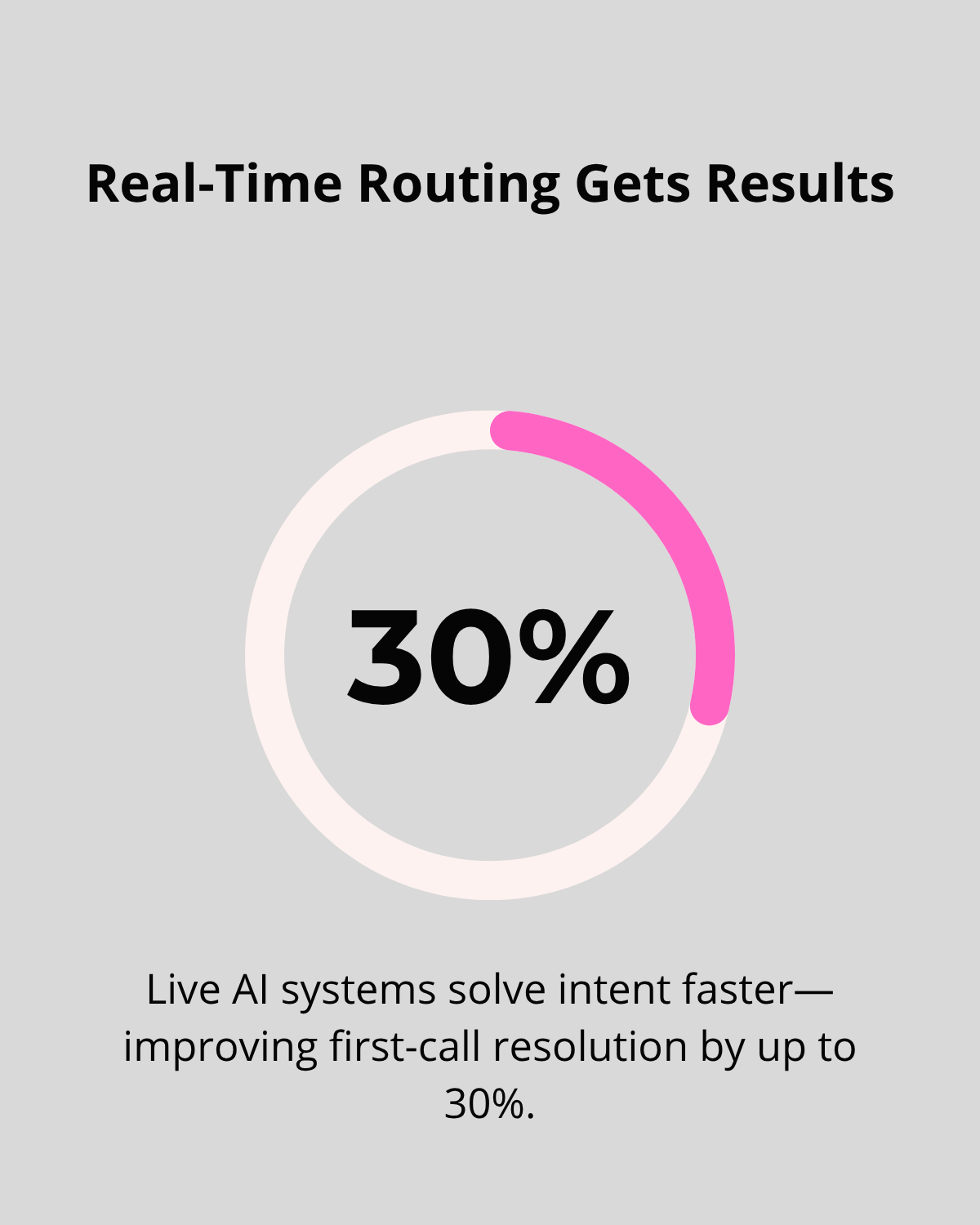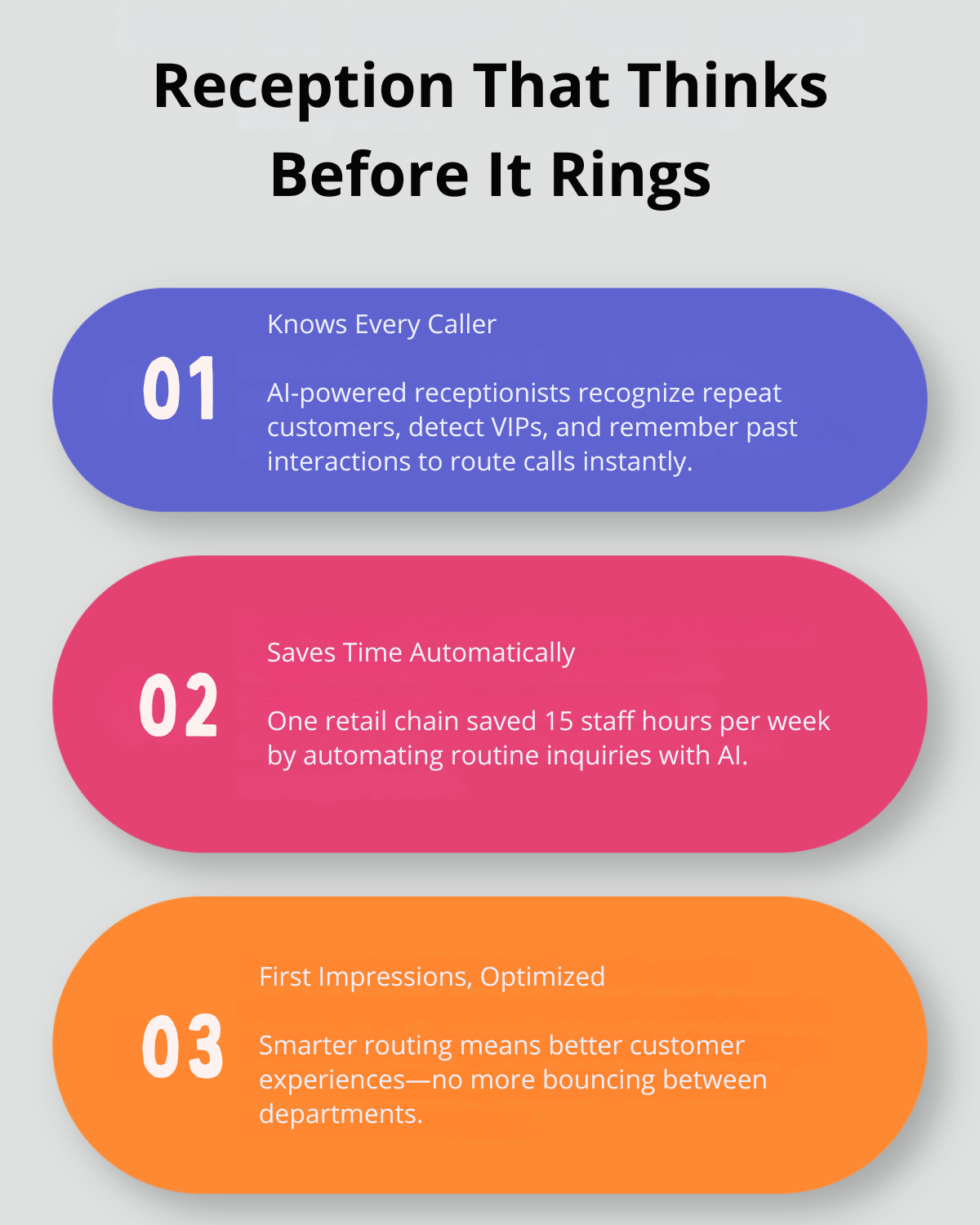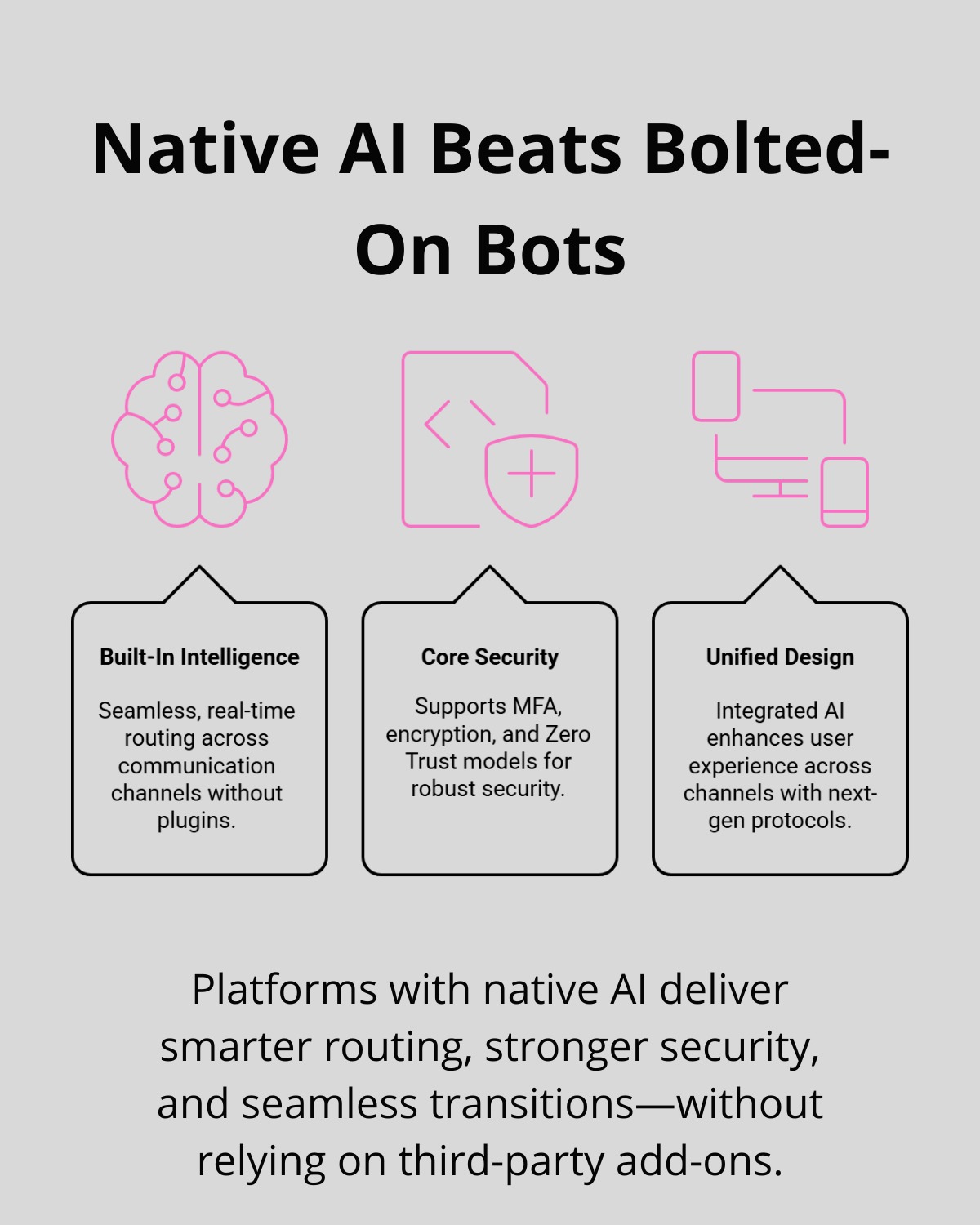Last weekend, I balanced on the sidelines of my child’s soccer game, one eye on her team’s defensive play and the other on my phone screen. A client emergency required immediate attention, so I joined a video call right there on the field. My UCaaS app routed me directly to the right team members based on the urgency level detected in the client’s initial message. Real-time decisions matter.
UCaaS has evolved. The latest platforms do more than log calls or send post-meeting summaries; they interpret signals mid-conversation and take action while it counts.
Why Reactive AI Leaves You Behind
Communication tools create vast amounts of data every day. Call records, chat logs, and video files stack up quickly. Many UCaaS systems provide analytics that process this information, yet businesses often rely on insights that arrive too late. The gap between collecting data and acting on it actually determines whether your team solves problems or prevents them altogether.
Most AI Stays in the Rearview Mirror
Standard UCaaS analytics focus on yesterday’s performance. These systems track call numbers, length statistics, and sentiment scores, all useful information that arrives too late to help current customers. According to data-driven UCaaS insights, most platforms explain why past calls failed but can’t prevent upcoming negative experiences.
Healthcare providers might spot missed appointment patterns through weekly reports. Yet they still lose daily revenue from scheduling problems they could prevent. This backward-looking approach creates a constant delay between finding issues and fixing them.
Real AI Responds Mid-Call
Progressive UCaaS solutions work on a completely different principle: making decisions during live conversations. When someone calls with an urgent issue, real-time AI can detect key phrases, voice patterns, and even breathing to set priority. These systems take immediate action rather than just collecting information.
The key difference comes down to when decisions happen versus when responses occur. For example, a bank might use AI to identify when callers mention “fraud alert” and automatically connect them with security teams, skipping general queues. This capability transforms frustrating experiences into reassuring ones in seconds.
Live call sorting creates measurable business results. Companies using real-time decision engines report up to 30% better first-call resolution rates, according to recent studies. This technology understands intent faster than menu systems and more accurately than human operators working alone.

The Rise of Hybrid Intelligence
The most effective approach combines AI recommendations with human judgment, which experts call hybrid intelligence. This model uses technology’s processing power while keeping human empathy and decision-making. For instance, an AI system might flag a potentially upset customer based on voice analysis, but a team leader decides whether to step in.
Advanced UCaaS collaboration tools show that presence management with AI suggestions cuts communication delays by 30%. When staff receive AI-generated availability updates, they route calls better and avoid bottlenecks.
Successful implementation needs dedicated AI champions within your organization. These team members adjust settings, monitor workflows, and ensure the technology serves business goals rather than becoming another unused feature. They connect technical capabilities with practical applications, turning promising technology into measurable outcomes.
Businesses switching to UCaaS can boost customer satisfaction by up to 30% through better omnichannel communication, as noted in a recent industry analysis. This improvement comes largely from responding intelligently across multiple channels in real time instead of after problems grow larger.
Where AI-Powered UCaaS Actually Delivers
Numbers tell stories. Behind every missed call or delayed response lurks lost revenue and frustrated customers. AI-powered UCaaS transforms these potential losses into opportunities by making communication systems proactive rather than reactive.
Fixing the ‘Missed Calls’ Gap
Each unanswered customer inquiry represents revenue walking out the door. For perspective, the UCaaS market reached $136.11 billion in 2023 with a 17.4% CAGR through 2030, reflecting how seriously businesses take communication efficiency.
When communications drop or languish in queues, companies lose more than just the immediate transaction. They actually sacrifice customer loyalty and future business opportunities, too.
Smart routing solves this problem through analysis of contact patterns. The system then prioritizes inquiries based on urgency, customer history, and business rules. A financial services firm saw abandoned contacts decrease by 32% after implementing this technology, which pretty much transformed their bottom-line results.
The productivity gains speak volumes as well. About 75% of users report significant time savings after implementing intelligent UCaaS solutions. Teams spend less time manually sorting communications and more time addressing customer needs.
Real-Life Scenarios for Every Industry
Healthcare providers face unique communication challenges in their daily operations. A medical clinic in Boston implemented AI-powered call routing that identified appointment-related keywords and prioritized patients needing urgent care.
Their no-show rate dropped 27% within three months as staff could proactively manage scheduling conflicts. This improvement, in fact, translated to thousands in recovered revenue.
Logistics companies leverage similar technology with different parameters for their operations. One regional delivery service programmed their system to detect weather-related terms and route these inquiries to specialized dispatchers.
During a snowstorm, the AI flagged weather-impacted deliveries, which allowed the team to proactively contact customers. They could then adjust expectations and maintain satisfaction despite delays.
Sales teams benefit from real-time transcription capabilities in their customer interactions. A software company equipped their representatives with AI that analyzed live conversations and suggested relevant product information.
Their conversion rate improved 18% as representatives accessed accurate information without putting customers on hold. This kind of technology basically eliminates the awkward “let me check on that” moments that can kill sales momentum.
Reception That Thinks Before It Rings
An AI receptionist knows every caller, remembers their history, understands their needs, and works 24/7 without breaks. This ideal becomes reality with AI-powered front-desk systems.
Modern UCaaS platforms filter incoming communications like a skilled assistant. They identify spam before it wastes employee time and recognize VIP customers who need immediate attention.
Technical inquiries get routed directly to support teams rather than bouncing between departments. One retail chain reported that its AI receptionist saved approximately 15 hours of staff time weekly by handling routine inquiries automatically.
The global UCaaS market is projected to reach $215.53 billion by 2032, driven partly by these intelligent reception capabilities. Companies increasingly recognize that first impressions matter a lot.
An AI system that connects callers to the right resource quickly creates positive experiences that traditional phone trees simply cannot match. This kind of technology essentially serves as your always-on, never-tired front desk that remembers every customer interaction.

How to Spot Truly Intelligent UCaaS
Marketing claims about AI capabilities seem to pop up everywhere in the UCaaS space these days. Vendors show off pretty dashboards and make big promises, yet many solutions actually disappoint when put to work. We need to look beyond flashy sales pitches to find genuinely intelligent platforms. So, how can we separate real intelligence from surface-level AI in UCaaS solutions?
Real-Time Wins Over Real Pretty
Those attractive dashboards might wow us during demos, but they honestly provide little value when calls need routing right now. We should focus on time-to-decision metrics instead, on how quickly the system can analyze and act.
According to key UCaaS success metrics, our organizations benefit from establishing monthly snapshots and quarterly deep dives using tools like Tableau or Power BI to track performance patterns.
Measuring the AI response rate offers deeper insight into system intelligence than visuals alone. How often does the system successfully handle inquiries without human help? This metric really matters more than any pretty interface. It’s also crucial to observe fallback reliability, when the system gets confused, does it smoothly transfer to a human agent?
Continuous monitoring gives us the clearest picture of AI effectiveness. The UCaaS market will likely reach $107.51 billion by 2032, with a CAGR of 14.5%, driven primarily by solutions delivering measurable results rather than just visual appeal.
Custom Logic Beats Templates
Cookie-cutter IVR systems tend to frustrate callers with rigid pathways that rarely match what they need. In contrast, truly intelligent UCaaS platforms offer visual logic trees that business users—not just IT specialists—can modify themselves.
During vendor evaluations, we should request a demonstration of workflow customization. Can the platform adapt to our unique business rules? Will it handle exceptions and special cases?
A healthcare provider recently told us how they quickly reconfigured their system to recognize appointment-related keywords and route those calls differently during flu season. This kind of adaptability is what actually separates intelligent systems from basic automation.
Our communication needs evolve pretty constantly, so the UCaaS platform should adjust without requiring expensive vendor intervention. This flexibility becomes particularly valuable in industries with seasonal patterns or sudden regulatory changes.
Native AI Beats Bolted-On Bots
Native AI integration ensures consistent performance across all communication channels. When we evaluated several platforms last quarter, the difference between native and bolted-on solutions was immediately obvious in how they handled channel transitions.
Vendors like Twilio, GoTo Connect CX, and PanTerra Networks have built their platforms around real-time intelligence from the ground up, delivering seamless, context-aware routing across voice, video, and messaging without needing additional plugins or third-party patches.
Security forms a critical foundation for real-time AI engines. With end-user spending on data security expected to hit $212 billion in 2025, vendors clearly recognize the importance of protecting sensitive communications.
We need to verify that platforms implement MFA, Zero Trust architecture, and strong encryption as outlined in secure AI workflows.
Leading platforms demonstrate native integration through unified experiences. For example, next-gen messaging protocols like GoTo Connect CX provide unified interactions across channels, while Twilio’s RCS enables media-rich messaging with built-in intelligence.
The UCaaS market, valued at $48.79 billion in 2023, continues to grow as more organizations recognize the difference between superficial AI and deeply integrated intelligence. When we evaluate platforms, we should prioritize those where AI capabilities form the foundation rather than serving as decorative elements.

Time to Rethink What “Intelligent” Really Means
The real value of AI in UCaaS is what it enables while the conversation is still unfolding. Most platforms are built to analyze. The best ones are built to act.
Does your system adapt to urgency in real time? Can it recover smoothly when automation falls short? Are business users able to refine workflows on their own? Is security built in from the ground up?
If you’re unsure, it might be time to take a closer look. At UCaaS Review, we track the platforms that go beyond dashboards and help teams respond faster and smarter, right when it matters most.



